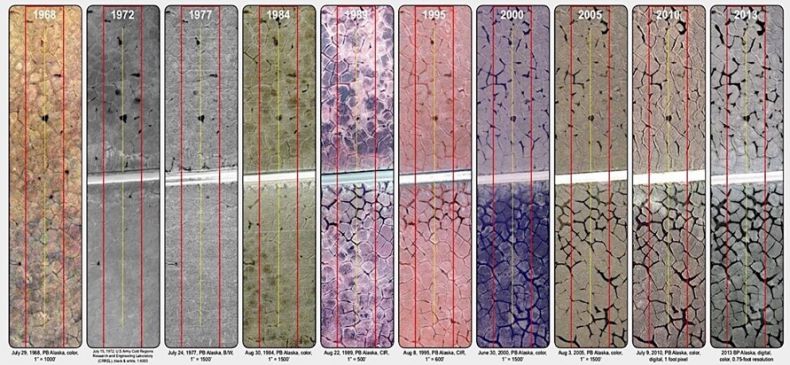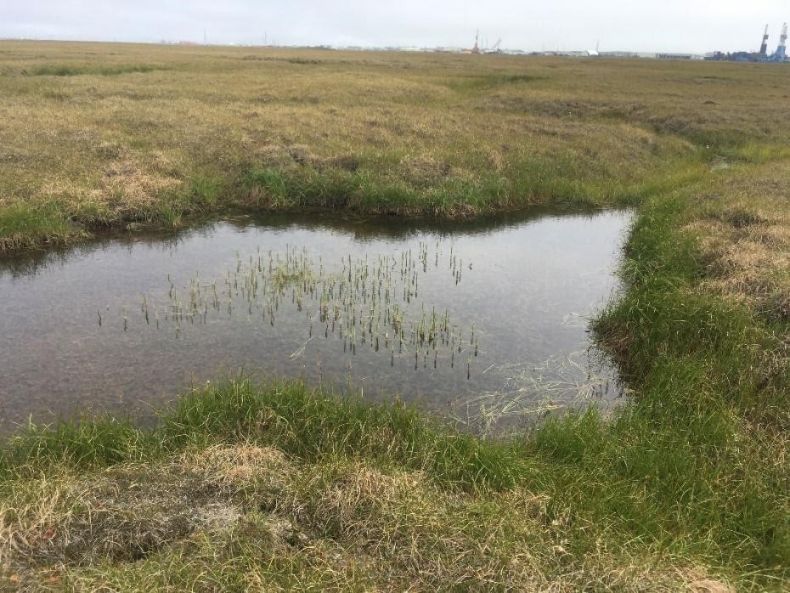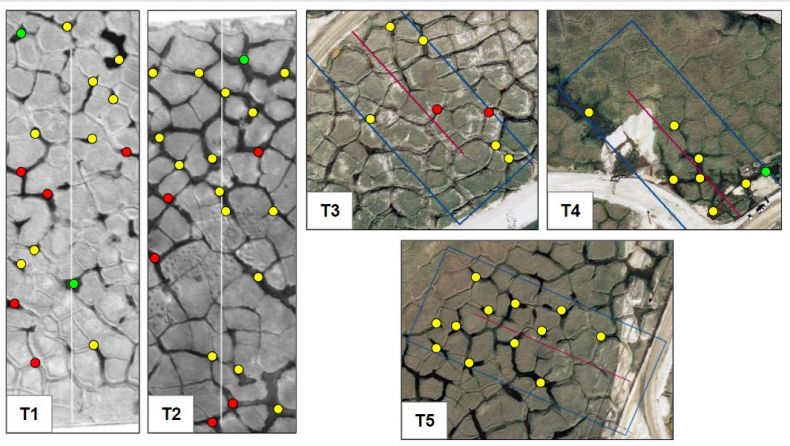The author(s) will give a talk
Thermokarst pond plant communities of Prudhoe Bay, Alaska: Environmental gradients and temperature feedbacks
1 Institute of Arctic Biology, University of Alaska Fairbanks
2 Institute of Arctic Biology, University of Alaska Fairbanks
3 Institute of Arctic Biology, University of Alaska Fairbanks
4 Institute of Arctic Biology, University of Alaska Fairbanks
Increases in abundance of thermokarst ponds, which result from ice-wedge degradation and subsequent accumulation of snow and water, have been observed throughout the Arctic (Jorgenson et al. 2006; Schuur et al. 2015). In the Prudhoe Bay region of northern Alaska, ice-wedge degradation is occurring as a result of both climate warming and infrastructure development (Raynolds et al. 2014; Kanevskiy et al. 2017). In some degraded areas, water depth and cover have increased and thermokarst ponds located at the intersection of ice wedges have expanded into surrounding polygon troughs (Walker et al. 2020) (Fig. 1). Recent shifts in water distribution (Liljedahl et al. 2016) are likely to increase the landscape-scale importance of thermokarst ponds in the Prudhoe Bay region.
In the absence of vegetation development, the accumulation of surface water following thaw provides a strong positive feedback that can accelerate the process of ice-wedge degradation (Jorgenson et al. 2015). Vegetation may play an influential role in recovery of degraded permafrost by insulating thawed soil and causing both soil refreezing and aggradation of ground ice (Shur et al. 2011). Through regulation of subsurface temperature, the floating and submerged aquatic vegetation in ponds (Fig. 2) may modulate ecological feedbacks to ice-wedge dynamics. If thermokarst pond vegetation functions in this way, the sediment surface of the pond bottom and underlying ground ice may be insulated to some degree from the radiative heating experienced by surface water in summer.
The aquatic plant communities that characterize thermokarst ponds are of particular interest given their abundance throughout Arctic landscapes, their relative lack of description within existing plant community classification systems, and their potential role in ice-wedge dynamics. In order to make predictions about where and how aquatic vegetation will develop, the factors that drive vegetation characteristics and community composition within thermokarst ponds must be understood. Here, we present a study in-progress that seeks to characterize thermokarst pond plant communities, to determine the factors influencing their species composition, and to evaluate their influence on temperature regulation and subsurface thaw.
To do this, we will examine 30-45 thermokarst ponds at several sites in Prudhoe Bay (Fig. 3) using a combination of plot sampling of vegetation and environmental conditions, temperature monitoring of water and sediment, and aerial site images showing pond development over time. We will use cluster analysis and ordination methods to classify distinct plant community types and to determine how patterns in species composition vary across environmental gradients. To determine whether vegetation has an effect on within-pond temperature and thaw depth, we will use general linear modeling methods.
This research will be completed as a master’s thesis as part of the Navigating the New Arctic: Ice-rich Permafrost Systems (NNA-IRPS) project, which seeks to examine the factors influencing ground ice conditions and landscape evolution in rapidly changing Arctic landscapes. This study will address an existing knowledge gap regarding an increasingly prevalent arctic plant community and its role in ecological feedbacks to ice-wedge degradation, which will allow for predictions to be made about the trajectory of change in Prudhoe Bay and in landscapes throughout the Arctic. Results will reveal connections between vegetation, hydrology, soil, and climate that are relevant to a wide variety of scientific fields involving Arctic landscape change.
Acknowledgements
My committee members, Donald Walker, Amy Breen, Martha Raynolds, and Roger Ruess, all of the University of Alaska Fairbanks, have played an essential role in the development and direction of this project. Other members of the NNA-IRPS project, including Mikail Kanevskiy, Ben Jones, and Anna Liljedahl have provided valuable input that has helped to place this vegetation-focused study in the context of hydrology and permafrost dynamics.
Jorgenson, M.T., et al., 2006, Abrupt increase in permafrost degradation in Arctic Alaska: Journal of Geophysical Research: Earth Surface, v. 120, p. 2280-2297.
Jorgenson, et al., 2015, Role of ground ice dynamics and ecological feedbacks in recent ice wedge degradation and stabilization: Journal of Geophysical Research: Earth Surface, v. 120, p. 2280-2297.
Kanevskiy, M.Z., et al., 2017, Degradation and stabilization of ice wedges: Implications for assessing risk of thermokarst in northern Alaska: Geomorphology, v. 297, p. 20–42.
Liljedahl, A.K., et al., 2016, Pan-Arctic ice-wedge degradation in warming permafrost and its influence on tundra hydrology: Nature Geoscience, v. 9(4), p. 312-318.
Raynolds, M.K., et al., 2014, Cumulative geoecological effects of 62 years of infrastructure and climate change in ice-rich permafrost landscapes, Prudhoe Bay Oilfield, Alaska: Global Change Biology, v. 20, p. 1211–1224.
Schuur, E.A.G., et al., 2015, Climate change and the permafrost carbon feedback: Nature, v. 520(7546), p. 171-179.
Shur, Y., 2011, Permafrost, In: V.P. Singh, P. Singh, and U.K. Haritashya (Eds.), Encyclopedia of Snow, Ice and Glaciers, Dordrecht, Netherlands: Springer, p. 841-848.
Walker et al., 2020, Long-term environmental and vegetation effects of a road and climate change in an ice-wedge polygon landscape, Prudhoe Bay Oilfield, Alaska: Manuscript in preparation.

Fig 1.
Time series (1968-2013) showing landscape change along two 200m transects intersecting the Spine Road near Lake Colleen in Prudhoe Bay, AK. Expansion of water-filled polygon troughs is evident, particularly along southern transect. Image from Walker et al. (2020). Aerial photos from BP Alaska Exploration.

Fig 2.
Image of a thermokarst pond near Prudhoe Bay, AK. Growth of emergent aquatic forbs (Hippurus vulgaris) and submerged mosses (Calliergon giganteum and Scorpidium scorpiodes) is visible, along with distant oilfield infrastructure.

Fig 3.
Preliminary selections of possible sampling locations along five transects at Prudhoe Bay, AK. Points represent possible sampling locations and point colors represent broad pond age categories for reference: green (pre-1968), yellow (1969-2000), red (2001-2018). Photos from BP Alaska Exploration.